The House of Incest
Anaïs Nin and the Poisoned Sperm

Anaïs Nin and the Poisoned Sperm
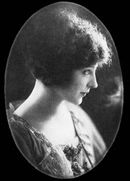
Once upon a time, in the autumn of 1933, American writer Anaïs Nin made her way through Paris streets to the office of Viennese psychoanalyst Otto Rank. She was on a pilgrimage to find her inner self. She had read Rank’s books on Don Juan, on incest, on the role of the artist and other intellectual themes of our time, psychoanalytic studies all, and they dealt with such figures as the double and the father. These were of great interest to her because these same male figures were stalking Anaïs as she arrived to see Rank.


At first their conversation was about her father, who in her mind was the archetypal Don Juan. She explained that he was a well-known musician in his own right, that he was from Barcelona, and that he was a narcissist, a powerfully erotic one. But many years earlier, back in 1914, he had abandoned Anaïs’ mother and the children in France near the Spanish border and, as Europe exploded behind them, on the boat from Spain to America, Anaïs began her diary at the tender age of 11. Pouring her heartbreak into the diary in an attempt to persuade him to come back, she wrote and wrote and wrote. He never did. He married an heiress and stayed in Europe until the ghosts of his past caught up with him.
Now something had happened between Anaïs and her father. What was on her mind, and would Rank condone what had happened? Would he be able to make sense of it?
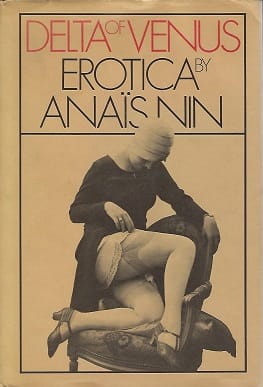
The Poisoned Sperm
Hugo Guiler, Anaïs’ husband, had no doubt that his wife had twice been the victim of sexual abuse at the hands of her father. The first few times it had happened, it was before he abandoned the family, when Anaïs was only nine. He had taken nude photos of her and the other children in what can only be interpreted as a highly erotic way, while also telling her she was ugly. You don’t have to be brilliant to figure out what confusion this would have created in a child’s mind. Basically he raped her innocence. Abandoning one’s family can be thought of as another form of abuse, another abdication of one’s responsibilities.
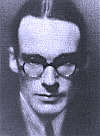
But all this paled in comparison with the fact that it appears that her father had slept with Anaïs earlier in the year. This time it was not mutual seduction but primal abuse revisited, if one may use such a term. Guiler felt that her father was a violent and paternalistic man who manipulated her feelings in a completely selfish way. Anaïs was now 30 but she had a desperate need for her father’s approval and he responded by violating her trust, insisting that she attend to his needs before there be any thought of what would be right for her. Such sexual abuse might well become a defining moment in her life, a profoundly disturbing one, when the past collides with the present to shape the future into a completely new form of alienation. No wonder Rank was interested in taking her case. But it horrified Guiler.
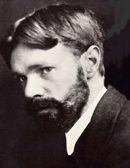
During the previous few years, Anaïs and Guiler had been living in Paris quite happily. His work at the bank covered their expenses while Anaïs wrote. A few years earlier they had shared a strong interest in D.H. Lawrence, whose writings about the sexual unconscious had fascinated them both, and they speculated that much of the power in Lawrence’s writing must have drawn on his own dysfunctional family background. Lawrence had an aggressively masculine but impotent father and an aggressively feminine mother who tried to usurp the dominant masculine role in the house and this created a bisexual model for the children to follow. Sexual identification problems, ambivalence, even emasculation were inevitable. In Anaïs’ family a similar scenario had played itself out: her father blamed her mother for assuming the masculine role and, out of the sexual confusion, Anaïs’ aggressive narcissism was born. Lawrence had come to reject marriage as a solution. Ideally he wanted love to combine friendship and passion within it, but he turned away from friendship between a man and a woman and became interested solely in the passion. Because this evidently could not be found in marriage, his passion led him more and more to the dark sexual unconscious, especially its masculine sexual side and thence to repressed homosexual desires. He wrote Lady Chatterley's Lover toward the end of his life at a time when he was probably sexually passive and he gained fulfillment through his writing, even trying to write as a woman in order to understand how women thought and felt about things. Anaïs followed the same path, except from the woman’s side. She was fascinated by Lawrence’s writing because it expressed her own violent sexual fantasies and her sense that only during sex was the world truly alive around her. This fed her desire to play the good girl and the bad girl, to flirt with lesbianism, to have affairs with men who were not her husband…
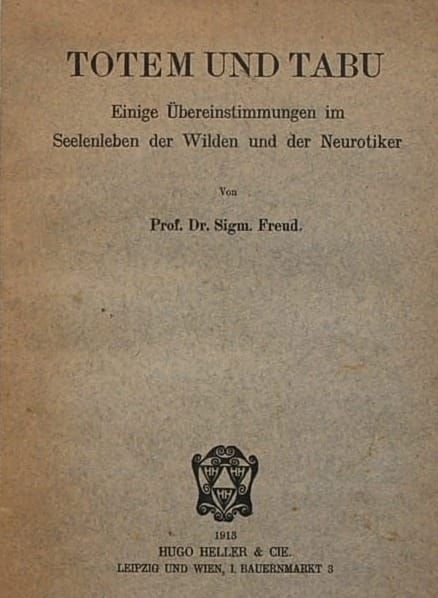
It led to the ultimate transgression: incest. Incest between a father and a daughter was not an act of heroism or creativity on Anaïs’ part; it was just plain wrong. Guiler had read up on his Sigmund Freud and clearly the incest taboo existed for a reason. Early on in his career, Freud had felt that parents seducing children and the abuse that followed was the root cause of all adult hysteria and neurosis. His theory went down like a ton of bricks and he abandoned it, concluding that sexual abuse mostly takes place in fantasies and dreams when it is in fact much more real and widespread than he could have possibly imagined. Evidently Freud had experienced it himself as a child. Guiler understood that such acts are narcissistic and selfish: loving oneself in others, no matter what they may think. This is the constant danger that the narcissist faces: a sliding self image that is formed out of feeding upon others, like a vampire. Incest borders on bestiality and pornography, not eroticism. It was reflected in Anaïs’ inability to individualize her love. To be fair, she felt deep revulsion for the incestuous act, which is why she could not achieve orgasm and why she referred to her father’s sperm as poison. Fortunately, there was enough Catholic guilt and Latin pride and writer’s detachment to get her through the experience. But it was not sexual pleasure so much as the determination to see it through. It was a masochistic act. She ended up wounded and it became her dirty little secret.
Guiler knew most of what Anaïs was up to: her affair with Henry Miller, her fascination with June, her perverse encounters with her father. He sneaked a look at her journal from time to time. Every piece of her writing was revealing and then in conversation there were the little slips of the tongue, the admissions. For her own protection she rationalized her actions to herself and they rarely spoke openly of these things, even when she allowed him to read what she had written. Perhaps she thought he could not live with the truth and therefore living with the deceptions and the lies was better? He accepted this. That is, after all, what marriage is all about, is it not? Love is more important in the long run.
Not Exactly The Electra Complex
When the famous psychoanalyst Dr. Otto Rank first met Anaïs, she had been seeing another psychoanalyst, whose specialization was more orthodox Freudian and scientific. She could not accept this other man’s view that her relationship with her father was motivated by competition with her mother. It just did not feel right.
Rank, by contrast, was more interested in myths and legends that we can learn lessons from, sexual fables that have universal applicability. So they spoke of the Greek myth where a young girl is abandoned by her father and they meet again 20 years later and he falls in love with her. From there, Anaïs and Rank tried to establish a profile of her father as something of a Don Juan. In Rank’s book, Don Juan pursues, seduces and abandons women who come to represent the unattainable Mother. Did Anaïs’ father seduce her to fulfill his lost intimacy with the mother of his children? Was he motivated by a perverse desire for immortality? Was Anaïs motivated by a desire to seduce the unattainable Father?
Anaïs then gave her account of her sexual relations with her father. The primal scene took place at Saint Raphael on the Riviera in June of that year. She had a sense of destiny at that moment, of somehow building a bridge back in time to the rupture in her past, reconnecting her with the world. But there was strong ambivalence on both sides, as one might expect, and an edge of violence behind the initial contacts, especially in the erotic letters he sent from Spain and the repressed sexual tension they contained. He seemed more like a stranger to her than a father, and since they both had powerful imaginations they dreamed of sex with the other and acting it out in elaborate prostitution scenes. Many years earlier, Rank had concluded that this incest fantasy was vitally important in the psychic life of artists who have a very powerful sexual drive or libido. Interestingly, such fantasies are generally orgasmic. Of course some artists went further and acted out their fantasies. Anaïs had the model of Antonin Artaud before her and she could see the dangers first hand of where that could lead. Anaïs avoided the psychic disintegration and the homosexuality but she did become promiscuous. Promiscuity was in itself a form of revenge upon the father and it could become compulsive.
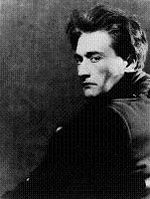
Incest took it one step further. In myths, incest is committed by family members who don’t know they are related (as was Oedipus’ case), or by family members who only later discover that they are not related. But, unlike Anaïs, most people repress the thought of incest at the level of infantile fantasies. Rank concluded these fantasies produce three kinds of people: (1) the normal person who is able to deal with its implications and get on with life; (2) the neurotic, who requires psychoanalytic guidance; and (3) the artistic person who translates them into their writing. It was the third of these that Rank was interested in here.
For Anaïs the artist, these fantasies became so powerful she had to act upon them. This requires a particular form of courage. Such fantasies are forcefully repressed by the culture, and the true artist probably needs this repression because he or she must master these impulses and pass beyond them. This may produce the psychoanalyst, who is also an artist, or it may produce a writer like Anaïs. The artist must resolve the fundamental dualisms of life, such as how the individual finds his or her place in the world around them and how they free themselves from their dependence on it. We do not know exactly how this occurs but the artist is generally rewarded by society with fame and a kind of immortality, which in turn undermines their ability to deal with the world as an artist by drawing them back into it. The dilemma for Anaïs was that she could never publicly reveal her incestuous act, so she achieved an artistic breakthrough at very little personal cost and she would defer notoriety until after her death.
There was great danger for Anaïs. Rank knew that art, like religion or mythology, is mostly masculine sexual fantasies. Men are the active players in most sexual matters, women are for better or worse the more passive players. If Anaïs played out a masculine role, this was new territory for a female artist. She had gone beyond the role of prostitute to her father’s desires. Who was she? Men at least can express their sex drive through violent and sexual fantasies without acting them out, but women who want to play the active role often end up neurotic or scared of being hurt, yet compelled to act it out anyway. Masochism. One might well ask why Anaïs would want to resume a relationship with her father if he was the cause of her original pain? He was her dark side, her Unconscious, but why revel in it? Might she still want and need his approval? She might end up forgiving her father and blaming herself instead. Fortunately, as for all true artists, her role-playing was always undercut by a sense of her own duplicity which was released in the secrecy of her writings. Her life became a conscious form of myth-making, switching in an almost surrealistic way between the different roles: mistress, bitch, daughter, father, double. She tells each man in her life about the other lovers – how they turn her on, how they perform – like a novelist weaving plots and characters because, if men set the agenda for her life, then she feels she needs to create her own version of events.
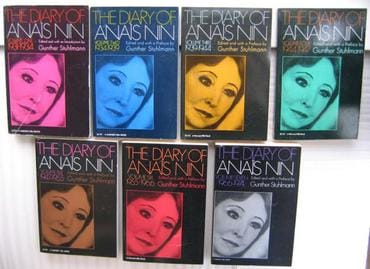
Rank concluded that the solution to the immediate problem of her father lay in realizing that sex, even incestuous sex, ultimately is not enough. It does not provide a permanent pathway to self-knowledge. It is instead a short circuit, an enigma that can never be explained, a Gordian Knot that is best cut with a sword like the umbilical cord it truly is. Nin and her father spent nine days together and it was fully sexual. It was brief, explosive, it tightened and loosened the bonds but it went nowhere. Rank would never have advocated that a woman sleep with her father to resolve an infantile trauma. He confessed that he was astonished to meet a woman who had knowingly seduced her parent and slept with him, whether he was the active player or she was. He suspected the father was the active player initially, which is why Rank asked Anaïs to abandon her father before he abandoned her a second time. She found this difficult, so Rank required there be a temporary displacement of her emotional attachments away from her father and onto himself, and this did the trick. Needless to say, Anaïs told everybody that this displacement procedure was sexual in nature but Rank made no apology for this. The patient was cured. Clearly she now was strong enough to begin in the role of the artist freed from entanglements and guilt. She and her father would keep in touch, of course, but she now had a strong aversion for this Don Juan and his obsession with seducing young women. Her father would now take offense whenever she disagreed with him and in a way she was able to extract some measure of revenge. Thus she was able to bury the memory of her lost father and transform it in to art. Psychoanalysis was vital to this process.
The Plumed Serpent
Joaquín Nin y Castellanos, the father of Anaïs Nin, was not the villain his daughter painted him to be. He was well aware that his daughter was keeping a diary and that she had an extraordinarily erotic imagination. He also knew that if her diaries were ever published, he could be arrested. But would anyone truly understand the nature of his relationship with Anaïs? He knew many would blame him for what happened, as he knew her husband had done.
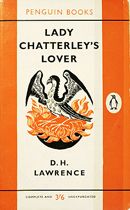
Nin y Castellanos felt this had everything to do with cultural and religious judgments and he did not feel any need to justify what had happened from his point of view. Incest, like pedophilia or bestiality or cannibalism are only taboos erected by social convention, always identifying with the victim. There is nothing inherently evil in them and any damage they might do is also socially constructed. In other words, he felt that they could only be damaging if you believed they were inherently evil. Why then succumb to such weakness? He felt that if Anaïs were to put this into her own words, she would support his explanation that this was something unique, a great sacrilege, a radical transgression of the forbidden. That was how it should be judged. Why impose conventional bourgeois sentiments upon it if that is what you think? Anglo-Saxon culture in particular had trouble understanding that blood is the most potent substance on the earth; Spanish culture understands it but rightly fears it; only French culture had learnt to understand it to some degree, which is why he chose to live in Paris.
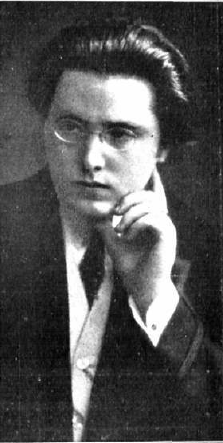
A few years earlier he had become nostalgic. He had not seen his children for many years. As he entered his fifties, he found a new form of reflection overtaking his thoughts, especially as the body began its second and final disintegration, its shrinkage into the spaces of eternity. He was now 54. He had begun writing regularly to Anaïs early the previous year, and she had responded with a section from her diary covering the period of their first separation. It was painful and upsetting reading but nonetheless beautiful, fragile, inspirational. He did not care to justify what had happened in the past. But the desire in her diary was strong and powerful, it had an energy of its own, so it felt right to mend the break at this point since they were no longer in a clear relationship of power, the father over the daughter. She was now a mature and independent woman with her own destiny and so, when they met again, he said that they did not need to lie to each other, because they understood each other perfectly. They both felt the pain of their separation and there was a mutual desire to reunite the two lost halves, like twins who have been separated from birth. He teased her with the rituals of courtship and romance – the flowers he brought her, the vase, calling her his fiancée. As an artist she understood the irony he invested in these actions and he enjoyed the fact that the people around them, who did not know their relationship, thought she was his lover, though he was generally quick to point out she was his daughter. They never believed him of course. For her part she played the coquette. All in all, they spent a relaxing time together. He was stiff with lumbago and could not do much anyway. At first it was like a mutual confession. They told each other their stories, their conquests, their fears, their doubts. She was transformed before his eyes into every woman he had ever known. He was all the men she had ever known. She sat on his bed as they talked. He felt the desire surge through him. He asked for a kiss and it was electric. He was aroused. She was in her negligée. She sat astride him and she rode him.
Through this act Nin y Castellanos believed they were transformed into something else, something mythical, legendary, phoenix-like. He knew his son would be incapable of understanding this. Joaquín had sided with his mother in seeing his father as the villain of the piece. Joaquín had inherited his father’s love of music while also embracing orthodox religion. Anaïs, on the other hand, was very much his double in flesh and spirit. Like him she had the artist’s nature, a love of music and aesthetics. She had a slender build like his and she was a perfectionist because she believed perfection was possible. He too was a perfectionist but he did not believe it was attainable. He strove for mastery and control over life, but he was aware of its destructiveness and how close we all are to death at any moment. It gave him a keen sense of the absurd. Was this narcissism? Perhaps. He was not a sentimentalist. He was a realist. He believed in power, in lust. It elevated one to a spiritual plane that lifts us off from the physical. By crossing the line he and Anaïs became kindred souls, twins, where the Other is the embodiment of our immortal soul. Soul love is never just physical love. It is powerful enough to replace institutional religion, it gives us power, it liberates us.
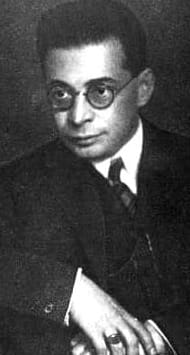
Lately he had been wondering if Anaïs had slept with him because her therapist, Otto Rank, had recommended it. Certainly it would explain a lot of things but he thought the dates were wrong. She had not met Rank until later in the year. Rank had explained it as Anaïs seeking to repair the circle of the past and that she planned to seduce her father, then abandon him as he had done with her, but this did not seem to be the case. This was not about seduction and abandonment; this was about healing the wounds of the past. Rank was a Viennese Jew and like other intellectuals from that city he thought sex and death made a natural pair. Nin y Castellanos thought analysis was for fools; sex and life were a better match. But he would be on his guard for the betrayal that would surely come.
The Mistral
Henry Miller, writer, friend, lover of Anaïs Nin, thought it was an illusion to believe that there is one last little dirty secret that explains everything! Paris was pulsing away in Anaïs’ bloodstream well before she began her strange flirtation with Antonin Artaud. It was the dress rehearsal for the scene with her father, and Artaud was crazy, homosexual, demented. But he wasn’t enough for her. What Anaïs wanted was to provoke a crisis in herself: an excess of men, all blurring together into a dramatic apotheosis.
Artaud’s “poetry and pain” excited Anaïs and she played up to his visions of herself as a sorceress, as a “plumed serpent,” a demoness, a Siren temptress, Circe, Shiva the destroyer. Yet Artaud was wrong, as Rank was wrong, to underestimate whom the true artist here was, for Anaïs was the heroic adventurer in this story, not them. They were extras. She descended into Artaud’s spiritual hell where sex and violence were all mixed up, operating purely on intuition, and she experienced the intensity of those feelings, the thrill of sudden violence around the corner, and when the curtain came down for the private scene, it was away from Paris and its tangible, physical grip of self-consciousness, in the airiness and abstraction of Provence.

If Anaïs was always conscious of playing out her roles, it was undermined by the sense that others had been there before her: Artaud for one, but also George Sand, all those bohemiènnes of the Left Bank, those exotic costumes from Spain and the Orient which looked so threadbare now, the houseboat on the Seine in Jean Vigo’s movie. Others had experimented with lesbianism and found it more meaningful; androgyny was never her forté. Miller for his part was not willing to go as far as Anaïs seemed prepared to go. He imagined her as she lay on her father’s bed with the Mistral blowing hot across her, remembering his penetration. Characters in her life blurred together – at least they did in his own mind. Anaïs had discovered the great taboo, her taboo, but was it the last taboo? Was it the one that would juice her writing into the future? Who had been in that dark place before? Certainly Lucrezia Borgia, the good girl/bad girl who carried her father’s child because he commanded it. Perhaps it was just a story really but it was a good one. Miller knew that Anaïs and her father were lovers for nine days, but how detached from it she was now. Her diary read as if she was in control but she wasn’t at the time. She had come since to accept that her father was in fact no Don Juan, no longer the virile figure she had fantasized. In her quest for a benign masculine figure, for her father, for God perhaps, she found only the aggressive and possessive masculine without the redemption of the passive and nurturing feminine. It was sex without sensuality, passion without love and she found only ghosts. She was not jealous. This was not immortality she had found with her father but a performance that emptied out life, a performance that ended in Anaïs’ abortion, the vicious circle completed, reductio ad absurdum. There were moments too when he thought sadly of that beautiful, lost child… his little girl.
Yet Henry Miller knew that for Anaïs he played the opposite to God: he was non-judgmental. Like Rabelais, like Casanova, he believed in the healing powers of sex and love, in the powers of poetic word play. There was magic in it, as in Lawrence, but one must not be as tormented and miserable as Lawrence was. Nor must one render life as some formulaic abstraction the way Rank seemed to do. Miller knew well that art for Anaïs was role-playing, then analysis, then writing it out. Her diary was a powerful work of literature, a modern classic of feminine writing that tells of her voyage of discovery across the seas of a lifetime, from being at peace to inertia to an urgent restlessness. The diary expressed the privacy of her soul, Mother Nature’s ocean rhythms, where words are like the milk that comes from her breasts. The act of incest was a station on her pilgrimage and it should not be overvalued, for it is the pilgrimage itself that mattered, not the stations on the way. That is why Anaïs’ words were at their most moving when she talked of the creative process: “My father’s leaving us when I was nine shattered me. I had lived in books and imagination, so my journey into my self was different. I had to find the earth. My father’s leaving gave me the feeling of a broken bridge with the world that I wanted to rebuild. For me, everything came from literature: the lies, the stories, the dreams... When I had balanced the two worlds – earth and imagination – then came the period of the greatest creativity...”
FIRE AND THE GOLDEN NIPPLE
Anaïs Nin’s secret diaries would not be published until 1966 through 1980, in seven volumes. They appeared when society was in a mind-bending mood: the counter-culture was in full swing and feminism on the rise. Nin quickly became an inspiring role model for many young women. Indeed, it is now apparent that she was the free spirit and visionary of her time that Edna St. Vincent Millay, Rebecca West, Virginia Woolf and all the other weaker women wished they could have been. Nin was impatient with the weak and whiny friends around her, wasting their lives. She was a dancing figure, an “American jazz microbe,” always on fire, and her strength and curiosity drove her to grapple with life’s great questions with all her power and passion. But incest?
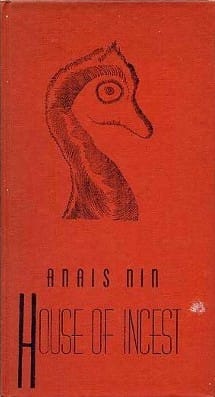
Earlier in her career Nin had explored the subject of incest with her father in what seemed like a fictional context in House of Incest (1936) and Winter of Artifice (1939-1942). However, it was only in 1995, with the publication of Fire that it became apparent that an act of incest had been committed -- either that or she was a great fabulist – and her biographers have struggled with it ever since. Following Henry and June and Incest, Fire is the third volume in the A Journal of Love series and she withheld their publication until after her death in 1977. Was it really necessary to wait so long? Perhaps incest is not covered extensively every day in the mainstream media, but its kin, “sexual abuse,” is. Teachers, preachers, politicians and priests are being arrested for sleeping with their students, for boy love, for peeking at pornography on their PCs… Is there something still taboo about a father and daughter having sex? Are there really any transgressions left? Do they matter in an age of pandemics, genocides, climate catastrophes and A-bombs detonated among civilian populations?
When Anaïs Nin and Henry Miller were in their heyday, the most shocking film of their era was Un chien andalou by Luis Bunuel and Salvador Dali, which they unspooled in 1929. Even today there is nothing quite so instantly shocking as seeing for the first time that razor drawn across an open eye. But today, with carnage and horror sanitized from the news media, children can still run in fear from ordinary birds and adults freak at the sight of a flying beetle or a mouse. Such deep-seated fears are striking for their intensity, their intolerance, their alienation from nature. Something irrational is at work here, suggesting that true horror is always personal – it is only experienced directly and individually, something that horror films have always been able to capitalize on, albeit via satire. But if such emotions are incredibly strong, where does that leave today’s artists who still hope to make a radical statement about art, politics or culture? Indeed, it leaves them with nothing interesting to say right now.

I remember a tempest in a teapot over Janet Jackson’s temporary breast exposure during the 2004 Superbowl telecast in the United States. The display in itself was hardly anything shocking or surprising but it did serve as a springboard for America’s conservatives to remind the other half of the population why they are frustrated at the decline in America’s moral standards, and it has intensified ever since. The Jackson-Timberlake performance was standard MTV cliché from the 1990’s and conservatives were right to take offense. It was pretty awful stylistically. But the larger stakes were immediately apparent and liberals were forced to defend the performance because it quickly became another round in the Culture Wars. That liberals felt obliged to defend Jackson’s breast while conservatives railed against filth, which pointed to the fact that if conservatives are actually losing the Culture Wars, then so too the liberals’ own progressive and avant-garde wing is completely bankrupt of anything insightful to say. Embarrassed, they raised their standard over a golden nipple and marveled that it had come to this!
There are good historical reasons for this of course. We are seeing the first signs of the next aesthetic and technological revolution wherein the values of conservative America will be eroded far more ruthlessly than anything they have ever imagined. In this revolution there will be no real megastars, no real rock or rap anthems, no masterpieces, for now everyone is a megastar and everything is available cheaply. When anyone can sound like a rock star on a digital piano and file-swapping and price-cutting erode corporate margins, what future is there for a music industry? When anyone can shoot a feature film on DV for next to nothing and audiences are impatient with linear, non-interactive storytelling, what future is there for a movie industry? When the number of people reading books declines to the point that books are no longer profitable for publishers, and editors are overruled by lawyers, what future is there for books? These art forms may not go away completely but one day they will be seen as 20th century phenomena that lingered into the 21st. Anyone born before the last cultural revolution in the late Sixties (in other words anyone older than 55) has trouble with these ideas but they are ignoring history. Nothing lasts forever. The future belongs to the Web and social media and it belongs to mobile phones, wireless services and video games. The result will be a return to decentralization a la the Dark Ages where the “margins” will be more vital than the centers of empire, where there will be a renewed interest in the microcosms around us, both natural and artificial, and where cyber-terrorism will include frightening civilian populations half to death on a regular basis – by the State and by the enemy. Whether you think all this is a good thing or a bad thing will be determined primarily by your age, which is always how change should be measured.
